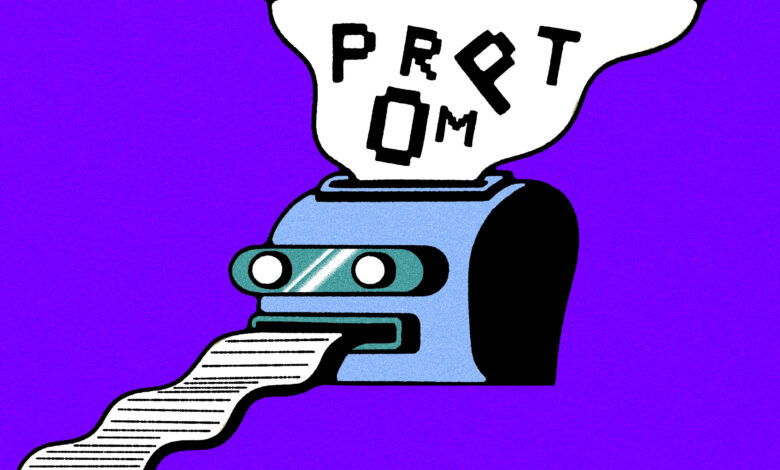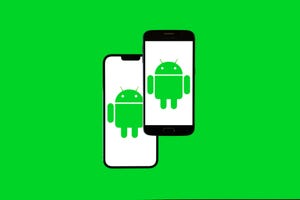How media agencies are shifting toward generative AI content in influencer marketing

By Antoinette Siu • March 26, 2024 • 5 min read •

Ivy Liu
There is a shift happening in influencer marketing as influencers increasingly rely on artificial intelligence to make content — and agencies working with them are trying to balance different types of content with new strategies and tools.
In a new AI study on the creator economy this month, influencer agency Billion Dollar Boy found that 92% of marketers have commissioned creator content either fully or partly using generative AI. Creators and influencers are embracing the trend too — 91% said they use generative AI at least once a week, according to the study. Yet there is also a growing preference among consumers and creators for AI-generated content over traditional creator content made without AI.
The report showed 60% of consumers prefer generative AI content over traditional creator content, while 81% of creators saw better consumer engagement on their generative AI content compared to the latter.
“I’m not surprised that consumers prefer AI-generated content,” said Mike Nellis, founder of AI content platform Quiller.ai. “This technology allows creators to develop content that is more personalized and relevant to more targeted audiences at rapid speed. It logically makes sense that kind of AI-enabled evolution is going to be more engaging and convert people to buy our products and engage with our campaigns.”
Additionally, 70% of marketers saw increased marketing spending on creator content with generative AI in the past 12 months. The agency surveyed 4,000 consumers, 1,000 content creators and 1,000 senior marketing decision makers in the U.S. and U.K.
This may become the next battleground for “attention on social feeds” as more influencers push their creativity using generative AI, said Thomas Walters, Europe CEO of Billion Dollar Boy.
Added Becky Owen, global CMO at Billion Dollar Boy: “Given the growing demand from brands, potentially higher compensation and increased consumer engagement that comes with generative AI creator content right now, the 9% of creators who have yet to embrace generative AI for content creation will likely be compelled to upskill.”
But experts say that there is still a place for traditional creator content, such as content sharing their skills, life or personality. AI content is a way to cut through noise, while the traditional content adds depth to campaigns, Owen explained. “We found that the magic and campaign impact lies in having a balanced mix of both traditional and generative AI-driven creator content,” Owen said.
John Geletka, founder of Geletka+, agreed that both types of content are still needed — right now AI content is “an untapped asset,” rather than a threat to traditional creator content.
“As a traditional content creator, why not leverage this innovative technology?” Geletka said. “I think as an agency we need to be open, honest and clear about our process and our sources with clients. This entails openly acknowledging the integration of AI within our processes by including such disclosures in our contracts.”
The report also indicates a willingness to shift investments toward using AI content – 65% of marketers surveyed said they plan to divert more of marketing budgets from other channels to creator content using generative AI in the next 12 months. Additionally, 70% said they expect more marketing budgets to be diverted away from traditional creator content and toward generative AI creator content.
Strategies for AI content
Amanda Ferrante, chief growth officer at Code3, also cautions that not all generative AI content is the same — when creators use AI for their posts, it can range from filters and audio captioning to images and even concept generation.
“It’s tempting to think that creators are pushing a button and getting [a] new video,” Ferrante said. “But the applications today are often more subtle — use ChatGPT to generate script outlines or concept ideas, use auto-captioning tools, use Descript to edit a video using the transcript, use generative fill in Photoshop to add something to the background.”
Ferrante advises agencies to understand how their influencer partners are using AI in their process — since a lot of the content generation still requires “heavy human input… You need to ensure creators or marketers on your team have a strong editing and review process to avoid brand safety issues. We recommend discussing the AI usage, process, and including guidelines in contract negotiations prior to engaging creators.”
Michael Heaven, co-founder and managing director of digital agency Butterfly 3ffect, also noted that underlying data is paramount in training AI models — so agencies need to be aware and learn about how they are used in content output and creations.
“[While] there is plenty of room for gen AI to improve the workflow of a project, there should be plenty of human guardrails to prevent output that could be harmful to a client being published,” Heaven said.
As the report points out, there are a number of upcoming hurdles as AI content spreads in the influencer space, from compensation changes and decreased quality of content to workload balance for creators and an increasing interest in regulating elements of AI.
As Chris Jacks, director of growth strategy of influencer agency HireInfluence, mentioned, generative AI may not prove all that much of a threat to traditional creator content – because AI-enhanced content does not make it “better by default.” Influencers who are able to use AI to continue making valuable content instead of maximizing output will succeed in the long run.
“Social media has long embodied the ideology of quality over quantity,” Jacks said.
https://digiday.com/?p=539217



